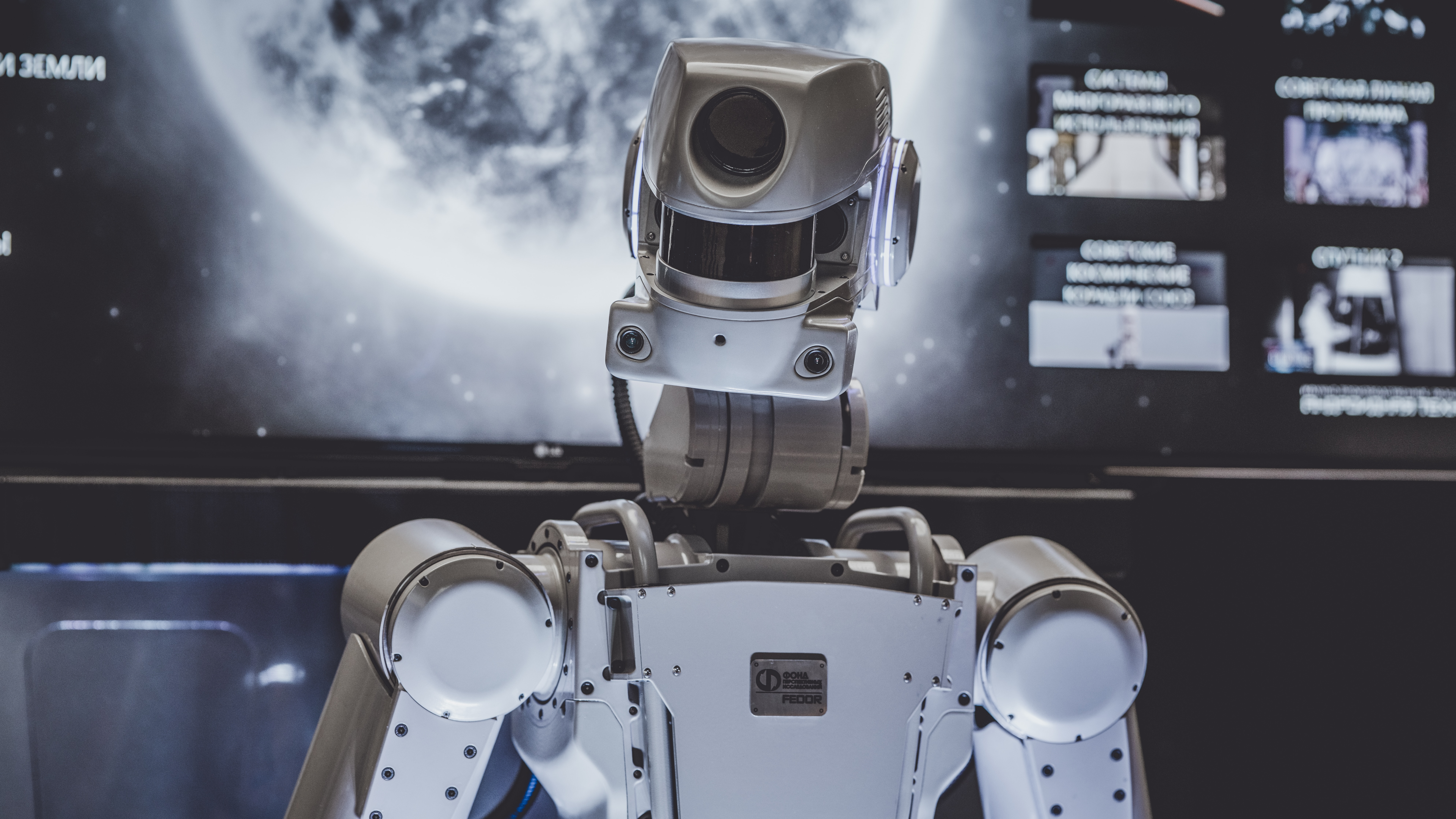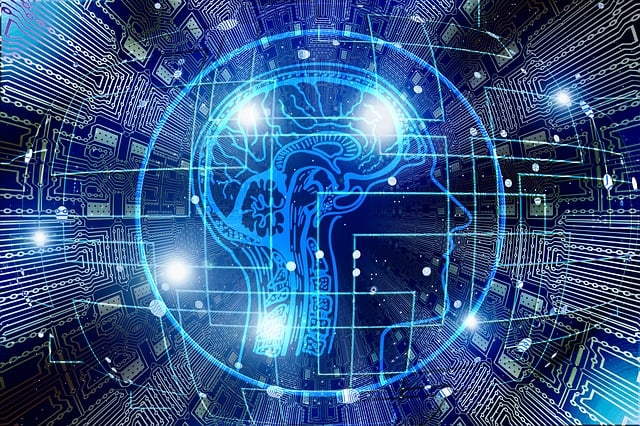In recent years, terms like artificial intelligence and machine learning have become buzzwords for pretty much every industry. From hi-tech businesses to roadside food vendors, everyone’s out there trying to harness the power of machine learning models to provide better service to their respective audiences.
But what exactly is AI machine learning? Are machine learning, deep learning, and artificial intelligence the same? I’ve surely seen people using them interchangeably.

I’m writing this post to clear everything up. I’ll start with the differences between the three and explain different use cases for them. After I’m done, hopefully, you’ll have no confusion about artificial intelligence systems and how they work.
AI vs. Machine Learning vs. Deep Learning
While everyone and their grandmothers are using these buzzwords left and right, they’re far from being the same. Let me outline the definitions of all three so you have an easier time understanding the stakes.
What is Artificial Intelligence (AI)
The popular definition of AI points to computer systems that can mimic cognitive functions the human brain can perform, such as solving complex problems and learning new things. Essentially, AI systems rely on math and logic to simulate human cognitive functions based on input data.
AI systems work by processing vast amounts of data, identifying patterns, and making decisions based on that information. Machine learning is one of the many techniques, where algorithms learn from data to make predictions or classifications. Don’t worry because I have a section coming up explaining machine learning as well!

Deep learning is yet another subset of machine learning, that involves neural networks with many interconnected layers to analyze and recognize complex patterns. As you’d expect, I’ll explain how deep learning works as well!
What is Machine Learning?
Machine learning refers to a subfield of artificial intelligence. Or, as stated in Microsoft Azure learning center, it’s an application of AI. Instead of traditional computer programming, machine learning algorithms rely on mathematical models that help computer systems with the learning process.
You may have heard that artificial intelligence systems can learn from past behavior with every iteration. It’s possible thanks to the machine learning algorithm that helps an AI model navigate through tasks.
At its core, machine learning teaches computers how to learn from data. Not only that but allows a computer system to execute decisions without any programming!
Let me try to simplify how it happens. First, a data scientist feeds the computer system a dataset with pairs of input and output. If you’re using images, the image itself and the label make the pair.
Whatever algorithm you use will then process these database entries, identifying patterns and relationships. Finally, the computer system then uses this acquired knowledge to predict outputs.
With each iteration, the system refines its understanding through a process called “training”. The data scientists involved in the process are usually called “trainers”.
As a result of the increasing accuracy, machine learning has turned into the foundation behind various applications, from analyzing customer behavior to receiving personalized recommendations on Netflix.
What is Deep Learning?
Just like machine learning is a subset of artificial intelligence, deep learning is a subset of machine learning. Instead of mathematical models, deep learning utilizes neural networks.
Unlike machine learning, deep learning algorithms can ingest raw unstructured data as well as labeled datasets. Many experts say deep learning is essentially an easily scalable model of machine learning.

You may have heard of neural networks, the primary powerhouse behind deep learning. A neural network has multiple layers of artificial neurons. The “deep” in deep learning refers to the depth of these layers.
The deeper you go with each layer, the algorithm processes and abstracts information from the previous layer. By the end, the system is able to recognize patterns, features, and representations within data.
Focusing on Machine Learning
As you can see from the definitions, all three components have overlapping characteristics. Artificial intelligence occupies the biggest area in this field of study, followed by machine learning and deep learning.
Another noticeable element is the association of machine learning with both artificial intelligence and deep learning. So, it’s safe to say that machine learning is the binding factor for all three components to coexist.
Typically, machine learning handles a machine’s capabilities to imitate human intelligence and uses human reasoning to solve problems.
The “problem” here can be recognizing a visual input, understanding natural text, or even performing tasks in the real world.
One of the biggest benefits of machine learning is that you can train models with a surprisingly small amount of data. In comparison, deep learning requires massive sets of sample data for training. Machine learning, however, requires more human intervention due to its limitations of learning.
How does AI Machine Learning Work Together?
To truly understand the power of machine learning algorithms, you first need to understand how ML and AI work together.
Essentially, an AI system is nothing but a collection of machine learning and other techniques. Machine learning models can analyze data and derive patterns.
In the first few iterations, the pattern recognition may not be very accurate. However, as the trainers introduce more training data to the models and keep refining the process, the pattern starts to develop high levels of accuracy.
This is the basic working of machine learning models in the context of artificial intelligence AI.
Various Machine Learning Models/Algorithms
The definition of machine learning in computer science may be simple but the working is not. Depending on how training data is fed to a machine learning model, there are multiple algorithms that a data scientist may use.
Let me outline the commonly used algorithms for you.
Supervised Learning Algorithms
Supervised and unsupervised learning are two of the primary models for machine learning. Let’s start with supervised learning.
As the name suggests, the model requires “supervision” from external actors, such as human trainers. They feed labeled datasets to the model until the end of training. Once processing is complete, the supervised learning model receives a test task to check whether it’s producing accurate results or not.
Common examples of supervised learning algorithms include Simple Linear regression, Logistic Regression, KNN algorithm, Decision trees, etc.
The primary goal of supervised machine learning is to map input data with output data and check whether the results match or not.
Unsupervised Machine Learning
Unsupervised learning, as the name suggests, happens autonomously with little to no human intervention. The benefit of this model is that it can process unlabeled datasets that contain unstructured data with no classification.
Unlike supervised learning, unsupervised machine learning doesn’t have expected outputs. Instead, this model is used to derive useful patterns from data and solve association or clustering problems.
Common examples of algorithms that go into the training include K-means clustering, Hierarchical clustering, Apriori algorithm, Eclat, Anomaly detection, etc.
Semi-Supervised Learning
As the name suggests, it’s a hybrid of supervised and unsupervised learning that utilizes small sets of both labeled and unlabeled data. Trainers mostly use large unlabeled datasets and small labeled datasets.
Applications such as speech recognition, content classification, and protein sequence classification benefit from semi-supervised learning.
Reinforcement Learning Algorithm
It’s an interesting one. The AI agent receives positive feedback for good actions and negative feedback for bad actions, making it a feedback-based machine learning technique.
It’s somewhat similar to unsupervised learning in the sense that no labeled data is used. Instead, the experience works as the data points. The purpose of this model is to create AI systems that solve linear problems as found in gaming and robotics.
Natural Language Processing
One of the latest subfields in AI and machine learning, natural language processing (NLP) enables computers to understand and react to natural human language. ChatGPT is the most prominent example of a computer system with NLP capabilities.
NLP techniques rely on a combination of linguistics, statistics, and typical machine learning algorithms. Sentiment analysis is perhaps the cornerstone of mimicking human language.
Essentially, the enabled machines assess the emotional tone of the text, helping involved parties to gauge opinions and adapt the responses accordingly. This process of natural language understanding is primarily why ChatGPT can answer questions linearly, something we’ve never seen with other chatbots.
What Can AI and Machine Learning Do?
All this hype about incorporating AI and machine learning in our daily lives must’ve stemmed from somewhere, right? What can they actually do for the human race? Let’s see if I can satisfy your curiosity.

Predictive Analytics
One of the ways the human brain works is by predicting sensory inputs to predict the future. Think about it. You’re working day in and day out for a better future, a future you’re predicting that waits for you ahead.
What if machines could do the same? Machines can arguably handle a lot more variables than humans can, right? Well, that’s where the predictive analytics capabilities of machine learning (ML) come into play.
It’s like having your own crystal ball that helps you make smart decisions that will inevitably lead you to the future you want. It’s a powerful tool that uses data and mathematics to forecast future outcomes.
At its core, predictive analysis sifts through historical data to identify patterns. Then, it uses these patterns to make predictions about what might happen in the future. Needless to say, no AI system can predict the future with 100% certainty, just like humans.
Why is it important you ask? Well, think of business scenarios where projecting the future is critical to deriving the present course of action. From ROI forecasting to market trends for trading, all of these use cases heavily rely on past data.
Sure, humans can analyze the data too. But the amount of time and resources it requires is not really feasible from a commercial standpoint.
Similarly, in healthcare, it can help with early disease detection and recommending treatments, potentially saving lives.
In marketing, it can help tailor advertisement campaigns to customer preferences, making your online shopping experience even more immersive than it already is!
Image Recognition & Video Processing
This is where machine learning blends with deep learning. You must’ve heard of deepfakes, right? They’re nothing but AI-processed doppelgangers of real people. Given enough time, an artificial neural network can reconstruct practically any media.
This is essentially possible because machine learning algorithms analyze vast datasets of images to identify meaningful patterns. They can identify features of the images for further processing. The same is true for videos.
For instance, in social media, platforms like Facebook use image detection to automatically tag friends in photos. In case you can’t remember, Facebook introduced this feature way back in 2010, when most of us weren’t so hyped about AI and machine learning.
Computer Vision is perhaps the biggest example of how good AI has become in image and video processing, an interesting field that brings artificial intelligence and machine learning together.
The healthcare industry turned out to be a massive use case for ML-driven image recognition. For example, Computer Vision can help radiologists detect abnormalities in medical images like X-rays and MRIs, aiding in early disease diagnosis.
Data driven decision-making and media recognition also play a vital role in the physical world. Take self-driving cars for example. They use artificial intelligence and machine learning to recognize road signs, pedestrians, and other vehicles to navigate safely.
Sentiment Analysis
Sentiment analysis prowess of modern machine learning models somewhat overlaps with my discussion on natural language processing (NLP). The agent can analyze words, phrases, and even emojis in a text to determine the tone and sentiment behind it.
Depending on whether the sentiment expressed is positive, negative, or neutral, the model may not be able to provide further instructions.
How can we benefit from sentiment analysis by artificial neural networks, you ask? Well, it’s possible to harness the power and use it for marketing, branding, research, financial markets, and even politics!
For starters, businesses can use sentiment analysis to understand customer reviews, social media comments, and surveys better. it can enable companies to make data-driven decisions that ultimately satisfy the customers.
In the context of financial markets, traders and investors can use sentiment analysis to gauge market sentiment, helping them make informed decisions about stocks and investments. In case you’re not aware, the candles you see on a price chart are nothing but a representation of the market sentiment!
Speech Recognition
You may have noticed an increased use of AI voice assistants across many media platforms. I have recently seen more AI-voiced YouTube videos than ever before. It’s all thanks to machine learning artificial intelligence. Sure, the voices are still not natural because I can clearly tell when it’s AI but the paradigm is shifting quickly!
Machine learning has opened up incredible possibilities in speech recognition, leading to computers understanding and processing spoken language, much like we do. This technology has found widespread use in real-world applications, transforming how we interact with devices and services.
Virtual assistants, for example, use speech recognition to perform assigned tasks, answer questions, and control smart home devices.
Then there are the transcription services. Industries, where a human tone is strictly not necessary, are benefiting immensely. For example, medical professionals, journalists, and researchers can transcribe spoken content efficiently, without wasting hours on useless tasks.
FAQ
What is AI in machine learning?
Well, think of AI as an umbrella that houses both machine learning and deep learning. Holistically, it’s the branch of computer and data science that aims to mimic human cognitive functions with a goal to perform complex tasks.
Why is AI machine learning important?
For regular consumers like you and me, it’s often hard to see the benefits of AI and machine learning. Enterprise businesses, on the other hand, are already reaping the benefits such as accurate customer behavior analysis to drive new development.
What are algorithms in machine learning?
In simple words, algorithms are mathematical models that map data to learn and perform tasks using the patterns embedded in the datasets. Machine learning utilizes massive datasets for pattern recognition, prediction, and classification.
What is a deep learning algorithm?
Deep learning is a unique type of machine learning that mimics the structure and function of the human brain. Deep neural networks are used to train a deep-learning model that eliminates the data pre-processing requirements to accelerate development with traditio